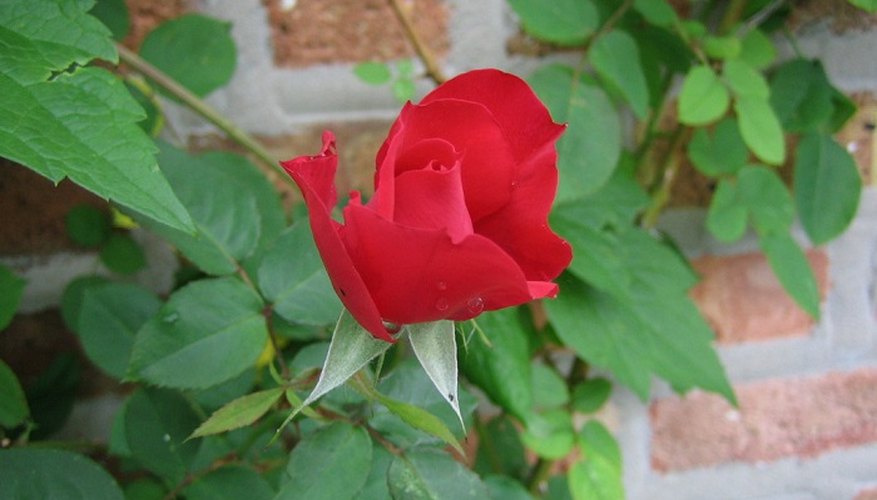Climbing plants like ivy, roses and jasmine can make a dramatic and colourful impression when trained correctly. If you don't want to mount a trellis to the side of your house, then consider using an inconspicuous wire to train your climbers.
- Climbing plants like ivy, roses and jasmine can make a dramatic and colourful impression when trained correctly.
- If you don't want to mount a trellis to the side of your house, then consider using an inconspicuous wire to train your climbers.

Attach vine eyes to the wall. Although it may be possible to hammer these directly into soft masonry, you can make a firmer fixing by first drilling a pilot hole. Use as many vine eye screws as you feel necessary to secure the wire firmly.
Insert wall plugs into the wall and screw in the vine eyes. The length of vine eye selected will depend on the type of plant grown. For example, a large-scale climber such as wisteria needs to be held away from the wall on wires and needs long vine eyes to support the wires at the appropriate distance.
Continue fixing vine eyes at the same height along the wall or fence, spacing them no more than 1.8 metres apart. Fix parallel horizontal runs of vine eyes up the wall at intervals of approximately 50 cm. If the wires are too far apart, plants with tendrils may struggle to find the next wire and will need more frequent tying in than if the wires are more sympathetically spaced.
Thread galvanised wire through the hole in the first vine eye, and wrap it tightly around itself, forming a secure fixing.
Pass the wire through all the intermediate vine eyes until you reach the vine eye at the other end of the wall or fence and have completed the first horizontal run. Pass the wire through this end eye and secure it so that the wire is held taut.
Curve over the stems of the climber and attach them in front of the wires using your chosen ties, such as raffia or string. Fix at as many points as necessary to ensure that the climber is held securely.
- Continue fixing vine eyes at the same height along the wall or fence, spacing them no more than 1.8 metres apart.
- Curve over the stems of the climber and attach them in front of the wires using your chosen ties, such as raffia or string.
Continue tying in the plant in this way, pulling down and training in lateral shoots as they develop so that eventually the wall or fence is covered in a series of arching stems. These will produce a multitude of flowering buds, as well as cover the surface evenly.
WARNING
Wear gloves and protective eye wear when working on this project.
